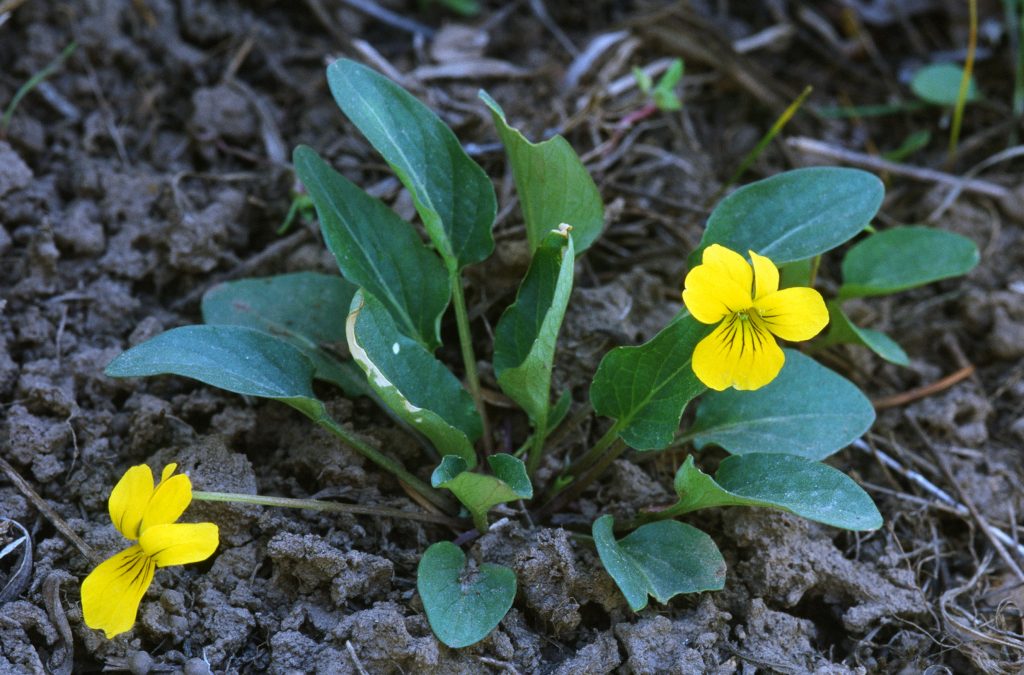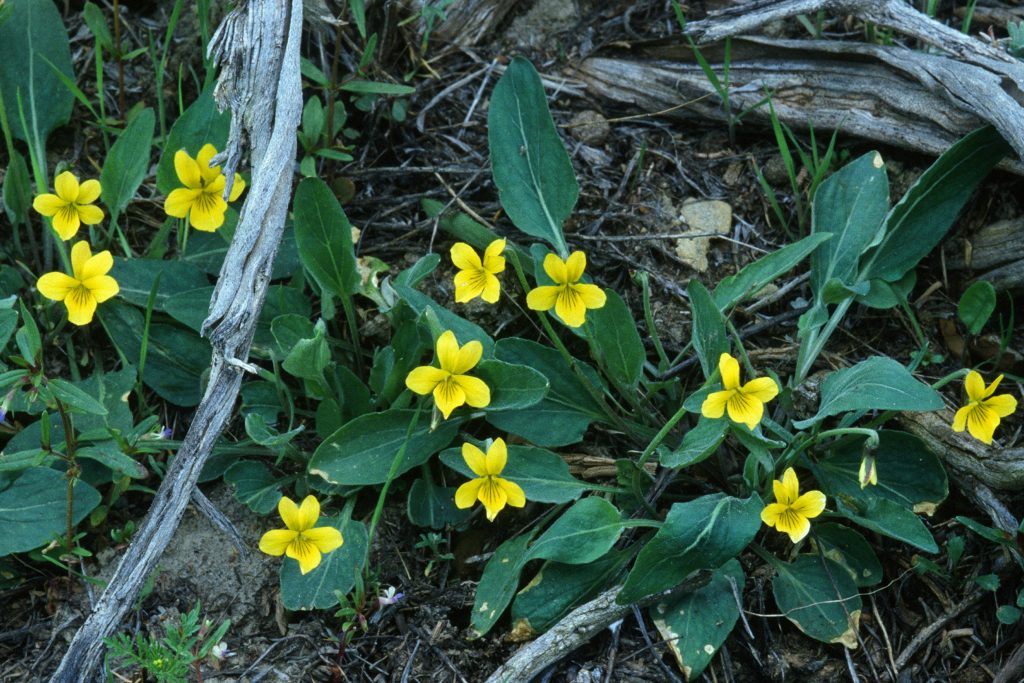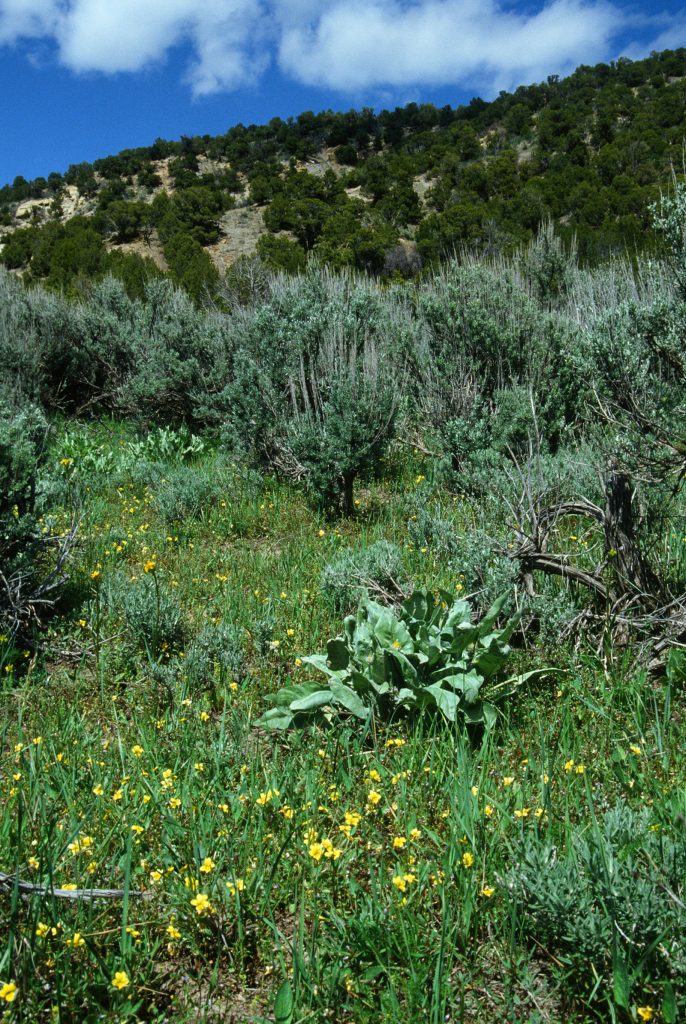Viola vallicola, A Nels.
Kim’s unedited notes. Illustrations: 3 photographs of Viola vallicola, no drawings

Aven Nelson, 1859-1952.
Sect. Chamaemelanium subsect. Nuttallianae [Marcussen, 2011].
2N=2x=12, IPCN 86-87, Fabijan, D.M., Packer J.G., & Denford, K.E., 1987.
Douglas GW, Straby GB and Meidinger D (eds). Aug 1991. The Vascular Plants of British Columbia, Part 3-Dicots.: www.for.gov.bc/hfd/pubs/Docs/Srs03/Srs03-2.pdf:
Viola vallicola A. Nels. var. major (Hook.) Fabijan, in Canad. J. Bot., 65(12): 2575 (1987) (syn. V. nuttallii Pursch var. vallicola [A.Nels.] St. John). Must read this publication by Fabijan. Dry grassland and open areas in the steppe vegetation and montane zones; common in SC BC to 51° N; S to Oregon and Nevada.
In south central BC, Canada (photo May 8). For plant details see e-Flora BC website.
V. vallicola has no red colour on outside of petals.

I found V. vallicola north of the roan cliffs, SW of Rio Blanco (letter to Bill Weber, May 4, 1995). Don’t know if this was var. major or var. vallicola. If the former, must add to locations at end of paragraph above.
In Colorado, about the border of Rio Blanco and Garfield counties, between the towns of Rio Blanco and Rifle, on the west side of Route 13, Viola vallicola grows at 7500 feet. Geologically, it is growing on the Green River Formation on the eastern side of the Roan Plateau and above the Roan Cliffs exposed by the Colorado River and at this point one of its tributaries, Government Creek (in Garfield Co. the Navy owns the oil-shale deposits). The Green River Formation contains the richest oil-shale beds in the world, more than 1.8 trillion barrels of estimated oil reserves, firmly locked into the shale. This shale layer contains limestone from skeletons of fish and animals of the Tertiary Period Lake Uinta. The Colorado River at one time was called the Grand, and from that name we get place names like Grand Valley, Grand Junction, and Grand Mesa.
Another site where this viola grows on Green River Shale is in Moffat Co, south of Maybell, in the Danforth Hills [photo], beside county road 37, 7300 feet.

Viola vallicola also grows in Moffat County, south of the Yampa River, beside 17 RD, in a relatively flat valley (with occasional nodding donkeys of oil wells) between Axial and Maybell, on dark-grey, deep soil derived from lime rich Mancos Shale (but no obvious shale in the soil), altitude 6300 ft, among open sage brush vegetation.
Annual average rainfall is below 10 inches.
Mancos Shale was formed during the Cretaceous Period, when seas spread across and submerged western North America. In most of Colorado the sandy shore deposits that would become the Dakota Sandstone were blanketed with marine shales that contained the shells and skeletons of innumerable marine animals. This marine layer of shells and skeletons of marine animals formed the Mancos Shale.
Then, as the land moved eastwards and the Rockies bowed upwards into folded, faulted ranges, this Plateau Province remained essentially flat-lying. During and since the Tertiary time, when the Rockies blocked eastward drainage, and the Uinta Mountains blocked northward drainage, an immense lake formed in the area where Colorado, Utah, and Wyoming join, a lake that geologists call Lake Uinta. Thick deposits of gray silty or sandy mud washed from the rising Rockies down onto vast river floodplains and deltas flanking the lake, to form the Wasatch Formation. In the lake were deposited muds that later became the Green River Shale. The lake lasted for 6,500,000 years during the Eocene Epoch of the Tertiary Period. Fossil fish, crocodiles, insects, and plants occur in the Green River Shale in Colorado. Upper parts of these gray shales contain an oil-like substance called kerogen, and form the Green River Oil Shale, one of the greatest energy reserves in the entire world. Large quantities of water will be needed to extract the oil from the shale, but the water from the Colorado River has all been allocated to other uses.
Ron Ratko says V. nuttalii vallicola [Utah State University herbarium does not], seeds pale brown, 2.0 x 1.2 mm.
Notes from Herbarium of Utah State University, 2001: Leaf widest at base, i.e. triangular.
Harvey’s key says that V. charlestonensis has pointed leaves but V. vallicola doesn’t. From Utah State University herbarium collection, I couldn’t see a noticeable difference between the leaf tips of these two. Also , all specimens of V. nephrophylla have pointed leaves, none has reniform leaves. The herbarium specimens of V. clauseniana have leaves that are very similar in shape to V. nephrophylla only slightly more elongated in some specimens. I don’t see enough difference between these to justify a difference. The only leaf specimen of V. clauseniana that is really different is the type specimen collected in the shade on the photocopied sheet shown by Margaret Malm.
My unknown viola above Wood Camp, Logan Canyon, Utah, on opposite side of the road, keyed out exactly to V. vallicola. Wood camp site has very dry dolomite or limestone soil. The plants growing in full sun had chasmogamous flowers but also cleistogamous fl. developing on long peduncles, either lying on the leaf surface, or more often, horizontally under the leaves. The plants in full shade have no chasmogamous flowers, only cleistogamous ones. Seeds pale cream to light brown, 2.2 x 1.1 mm. Also close-by at the site above Wood Camp is Viola utahensis, confirmed by the teeth on the margin (not exaggerated and curled as for V. purpurea), leaves wide-ovate (cf. triangular for V. vallicola). Both species flowering on May 6, 2001.
Compare my notes and photos of V. vallicola in Colorado (see above) with those above Wood Camp, Utah. Wood Camp site is
Smithsonian herbarium has a type specimen:
Viola vallicola Nelson, A., Bull. Torrey Bot. Club 26:128. 1899 – Isotype (Violaceae)
COLLECTION: Nelson, E.E. s.n., 07 Jun 1885. USA. Wyoming. Pine Ridge.
VERIFICATION: Specimen compared to the original publication.
US SHEET NO.: 00344880 BAR CODE: 00114625